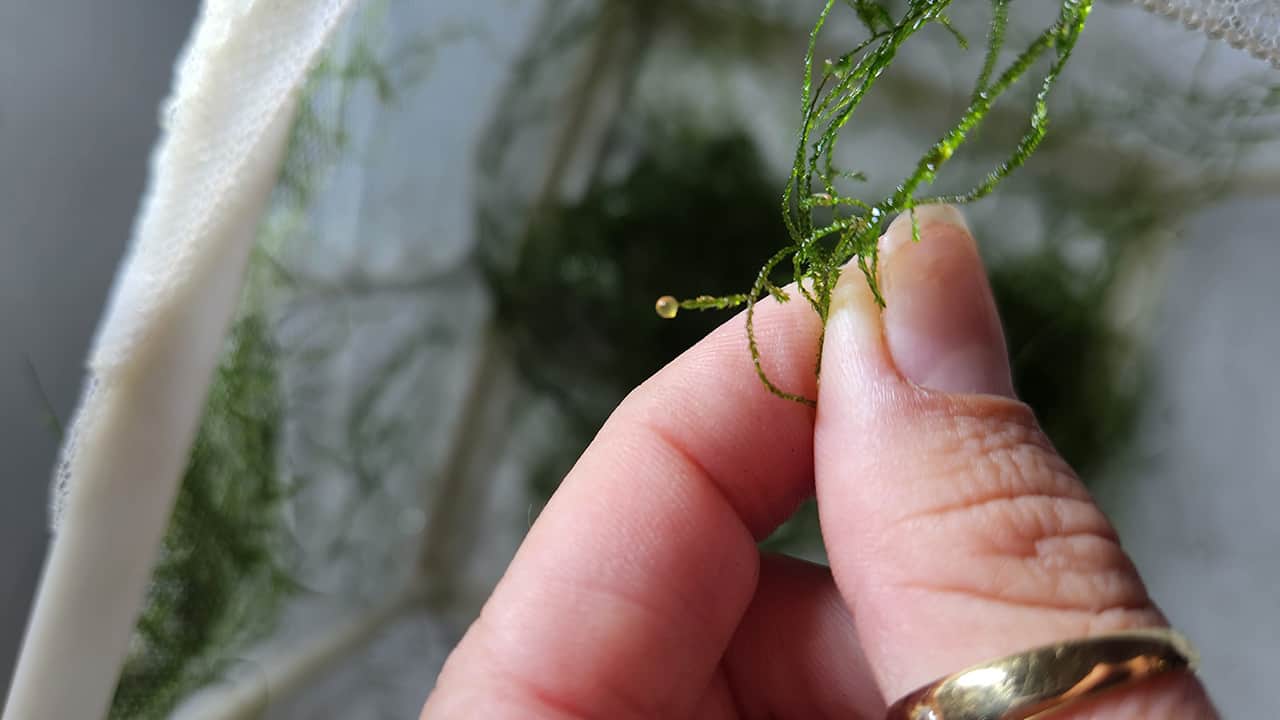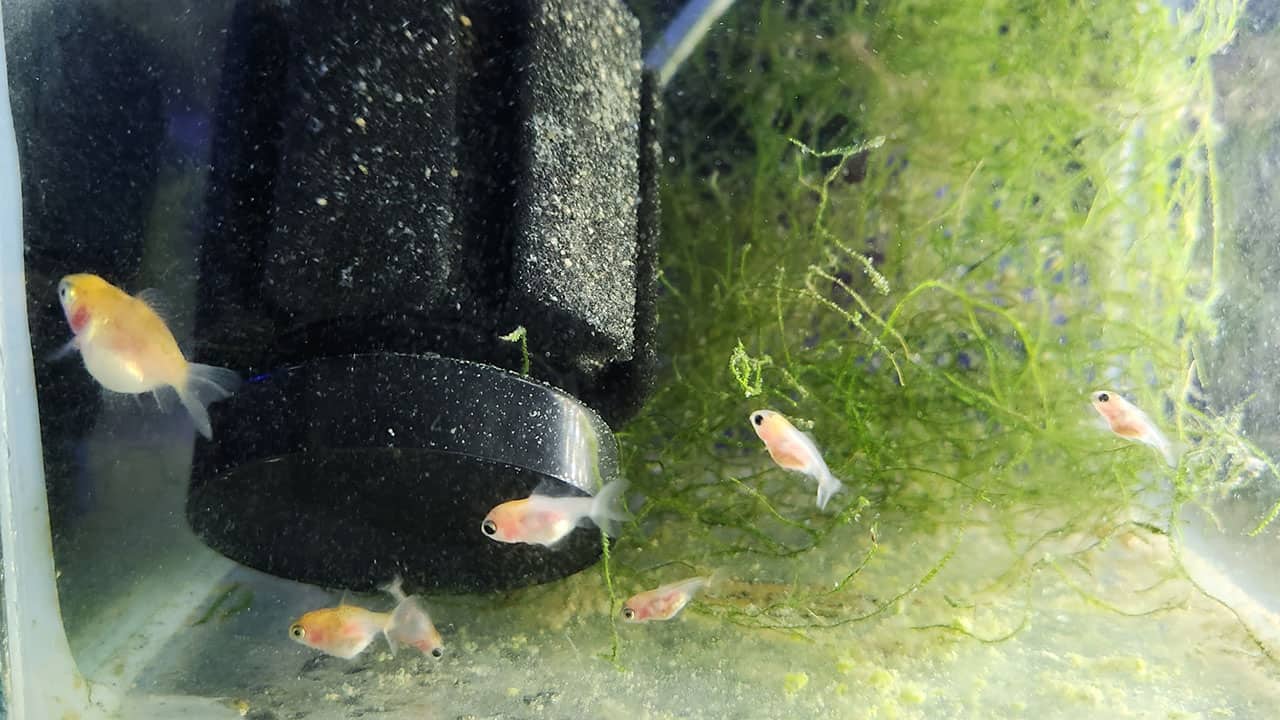What To Do When Your Fish Lay Eggs
If you find yourself in a situation where you look into your tank and notice some freshly laid eggs, don’t panic! I am here to help you with this article and guide you through what to do when your fish lay eggs unexpectedly.
I decided in 2022, around Christmas, to gift myself three little fish, and that’s how it all started. I am relatively new to this hobby, and some months later, I added the fourth (Lionhead) to the mix.
How the egg-laying process started
I started to notice the Fantail’s belly getting larger, but I thought maybe she was eating a lot. A few days later, I noticed she was being chased by the new addition and one of the Black Moors (now I know these two are boys, but at the time, I didn’t know this fun fact).
I inspected with curiosity as I had never had bullying issues, and I soon understood what was happening. The Fantail was ready to lay eggs, and the boys were helping her by bumping her bottom to release the eggs and then fertilizing them.
This instilled panic in me, as I had no backup tank or set-up to separate the eggs from the rest of the fish. I also had no idea what I was doing, which added to the stress.
What I Bought / What You Need
I quickly went to my local pet store and got the following items:
- A small mesh breeder (the boys were chasing my pregnant fish all over town, so I used this to help her take a break from the guys)
- A small glass tank (where I would grow the babies/fry)
- A sponge filter (because it won’t suck the tiny fry babies in and hurt or trap them)
- A tiny air pump (used to power the sponge filter)
- A splitter connection
- Additional pipe (make sure it will fit over your pump connection and new filter (mine was all for a 4mm)
- And a small air stone (this will ensure a good oxygen supply)
- I would suggest you get Java Moss or some plant for the future. I luckily had this in my tank at the time, and it was easier to remove the eggs because they were laid in the moss. The new fry babies also like to hide in it.
What I Did After The Eggs Were Laid
The Fantail and the Black Moor did something (wink, wink) in the Java Moss, so I was sure some eggs were fertilized.
I then placed the Fantail in the tank’s net to ensure she could have a break. When I see she has her energy back, I place her back with the others. I removed the Java Moss with the eggs and placed them in a separate new tank with a filter and air stone.
I used the water from the main tank for the new tank. It is best not to keep the mom and dad with the eggs as they won’t ever be nominated as parents of the year (they eat whatever fits into their mouth, including the eggs and their new fry).
Keep checking on the eggs. In a day or two, you will notice some of them turning white. These eggs aren’t fertilized and should be removed if possible.
Some people say it’s OK to leave them in, but I prefer to remove them for the safety of the fertilized eggs. After removing the unfertilized eggs, I was left with eleven fertilized eggs (all eleven hatched).

The fertilized eggs will either be translucent or have a yellow tint. After a few days, you will start seeing black dots form in these eggs. These are the new baby fry growing.
Depending on your water temperature, they should hatch in about four to five days from being laid (within a week at most).
Tiny fry emerges from their eggs, sometimes looking translucent, so I used a light to see them in the tank. Their eyes give off a little shine that helps you spot them better, but seeing them in the first few weeks isn’t easy.
What To Feed The Fry
I have goldfish pellets that I crushed up very finely for the fry. You can also get special food for babies at the pet shop. A little is all that is required per day. I also make sure to have some cooked peas on hand and give them about twice a week.
The peas I use are the frozen ones that I add a bit into a bowl, cook in the microwave, and let cool. I keep a small container of cooked peas in the fridge for when I need them.
The peas’ skins should be removed, and the inside of the pea should be mashed to a very fine paste. The babies love it.
How Often To Clean The Water
I remove about a third of their water daily and add new water to the tank to ensure the water quality isn’t a problem for the younglings.
I also add some drops of Goldfish Tonic to the water to assist with the fish’s overall health. Just make sure of the quantities before adding it to your water.
I also remove and clean the filter sponge every other day and rinse it off under the tap with fresh water.
What The Baby Fish Will Look Like

I couldn’t find any information on this question. I am still very curious to know, as my baby fish are only a few months old now.
I will update this post to show progress as the months pass, but I have seen some strange things. The one fish baby looks like it was born a month before the others, where they are only a day apart.
One baby with two different eye colors might be my favorite at this stage. One eye looks just like the mom Fantail’s eye (black), and the other is beautiful silver (at this stage). I am not sure how the eyes will still change.
